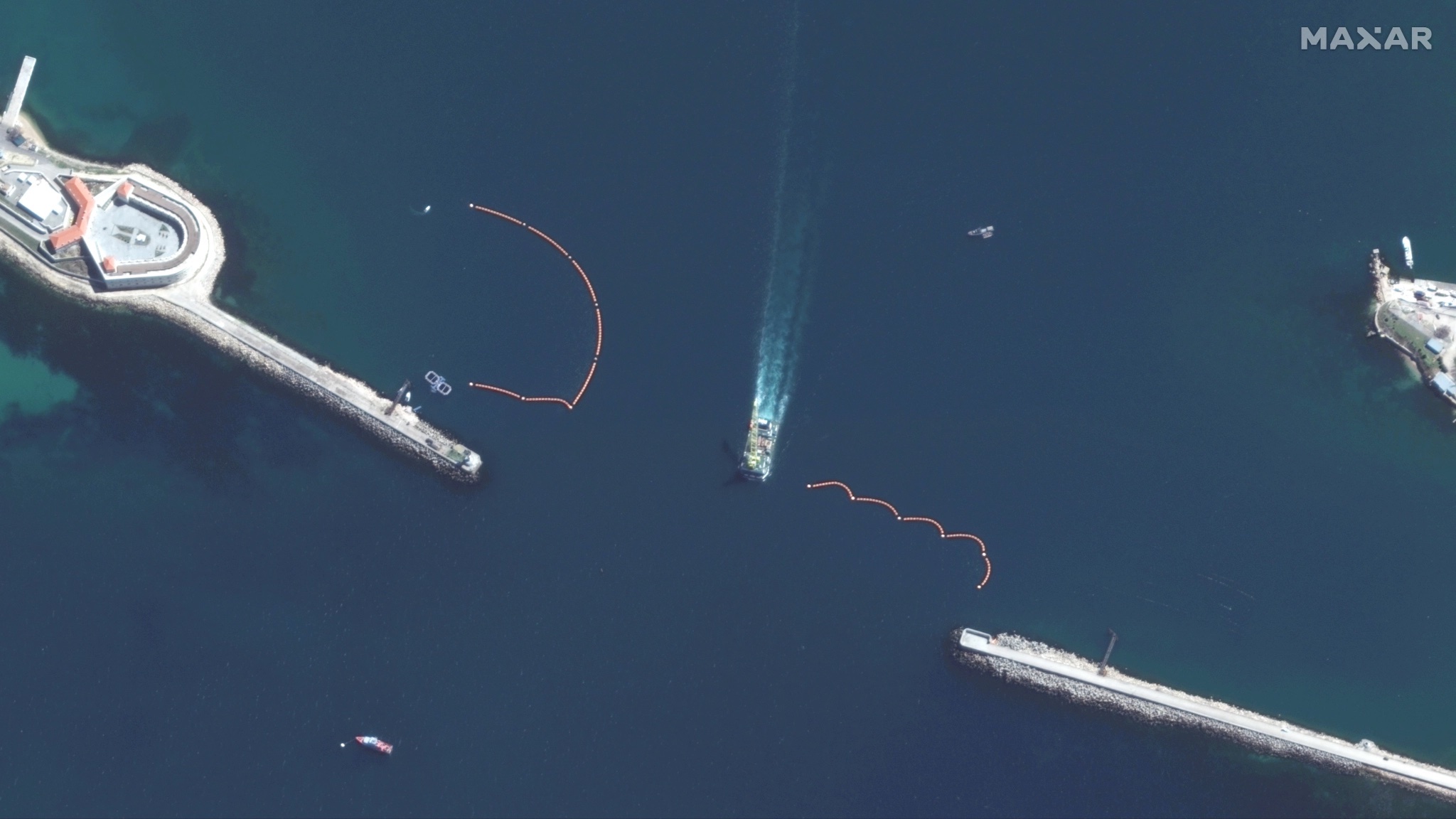Russia is using military-trained dolphins in the Black Sea, according to satellite images
The dolphins have been deployed since February

Russia has deployed military-trained dolphins to protect its Black Sea naval base in Crimea from underwater attack, new satellite images reveal.
The images, taken by the U.S. satellite company Maxar and analyzed by the nonprofit professional military association U.S. Naval Institute, show that two dolphin pens were placed at the entrance to Sevastopol harbor around the beginning of Russia’s invasion of Ukraine in February. The harbor, which sits at the southern tip of Crimea, is a major port and of vital military importance to Russia. While many of the Russian ships anchored there are safely out of missile range from Ukraine, they could still be attacked underwater, giving trained bottlenose dolphins (Tursiops truncatus) an important role to play in their defense.
Russia has been training and deploying marine animals for military purposes since the 1960s. Throughout the Cold War, both the U.S. and the Soviet Union developed marine mammal programs: The U.S. used dolphins and Californian sea lions, while the USSR deployed dolphins in warm waters and beluga whales and seals in Arctic regions.
Related: Ukraine invasion's impacts on the world of science: Live updates
The Soviet navy used Sevastopol as a base from which to train and send dolphins on operations throughout the Cold War, but the marine mammal units came under Ukrainian control — and into disuse after the Soviet Union collapsed in 1991, when Crimea became part of Ukraine. Following the 2014 annexation of Crimea by Russia, the dolphin units came into Russian hands. Ukraine demanded the return of the animals, but the request was denied by Russia, which has since expanded its marine mammal operations.
Dolphins can communicate through high-pitched whistles, and they also sense objects and determine distances through echolocation — sending out high-frequency clicks that bounce back off objects, revealing their proximity to the dolphin. Specially trained dolphins use this natural sonar to detect and draw attention to naval mines or enemy divers. Russia also claims to be finding new ways to make use of dolphins’ detecting abilities.
"Our specialists developed new devices that convert dolphins’ underwater sonar detection of targets into a signal to the operator’s monitor," a source said to the Russian news agency RIA Novosti. "The Ukrainian navy lacked funds for such know-how, and some projects had to be mothballed."
Sign up for the Live Science daily newsletter now
Get the world’s most fascinating discoveries delivered straight to your inbox.
Military marine mammal programs are expensive; the U.S. Navy spent about $75 million on military dolphin upkeep between 2012 to 2019, Hakai Magazine reported, while it’s not publicly known how much Russia spends on its marine mammal programs.
This isn’t the first time that Russia’s militarized marine mammals have been spotted. In 2018, satellite imagery revealed that Russia had deployed dolphins at a base in Tartus, Syria, during the Syrian war, according to Forbes. A year later, Norwegian fishermen reported that a surprisingly tame beluga whale had been harassing their boats while wearing a harness that read: "Equipment of St. Petersburg," Live Science previously reported.
Maxar, the satellite company which took the photos, produces "90% of the foundational geospatial intelligence used by the U.S. Government for national security and keeping troops safe on the ground," as well as the imagery for companies such as Google Earth and Google Maps.
Originally published on Live Science.

Ben Turner is a U.K. based staff writer at Live Science. He covers physics and astronomy, among other topics like tech and climate change. He graduated from University College London with a degree in particle physics before training as a journalist. When he's not writing, Ben enjoys reading literature, playing the guitar and embarrassing himself with chess.










